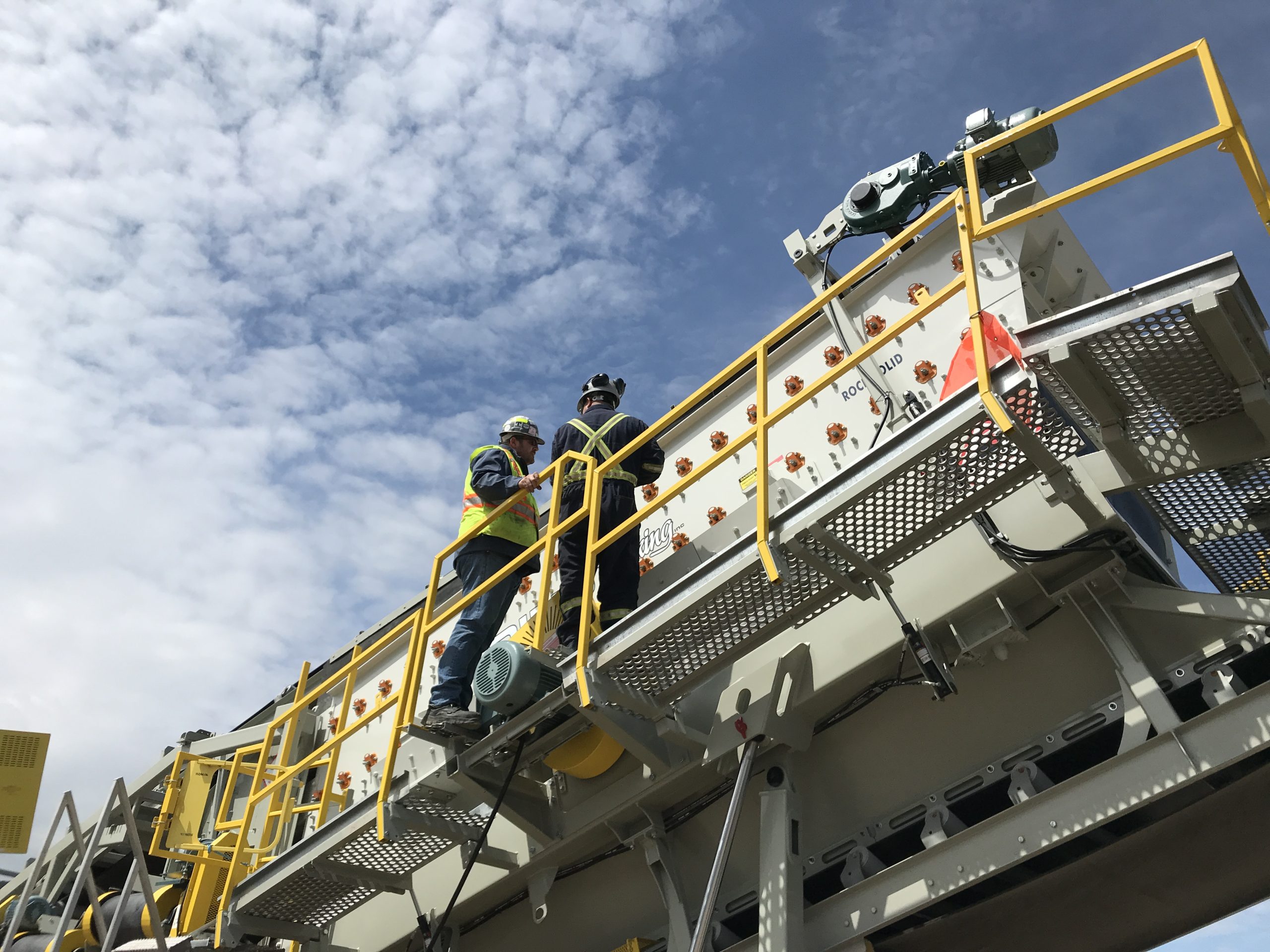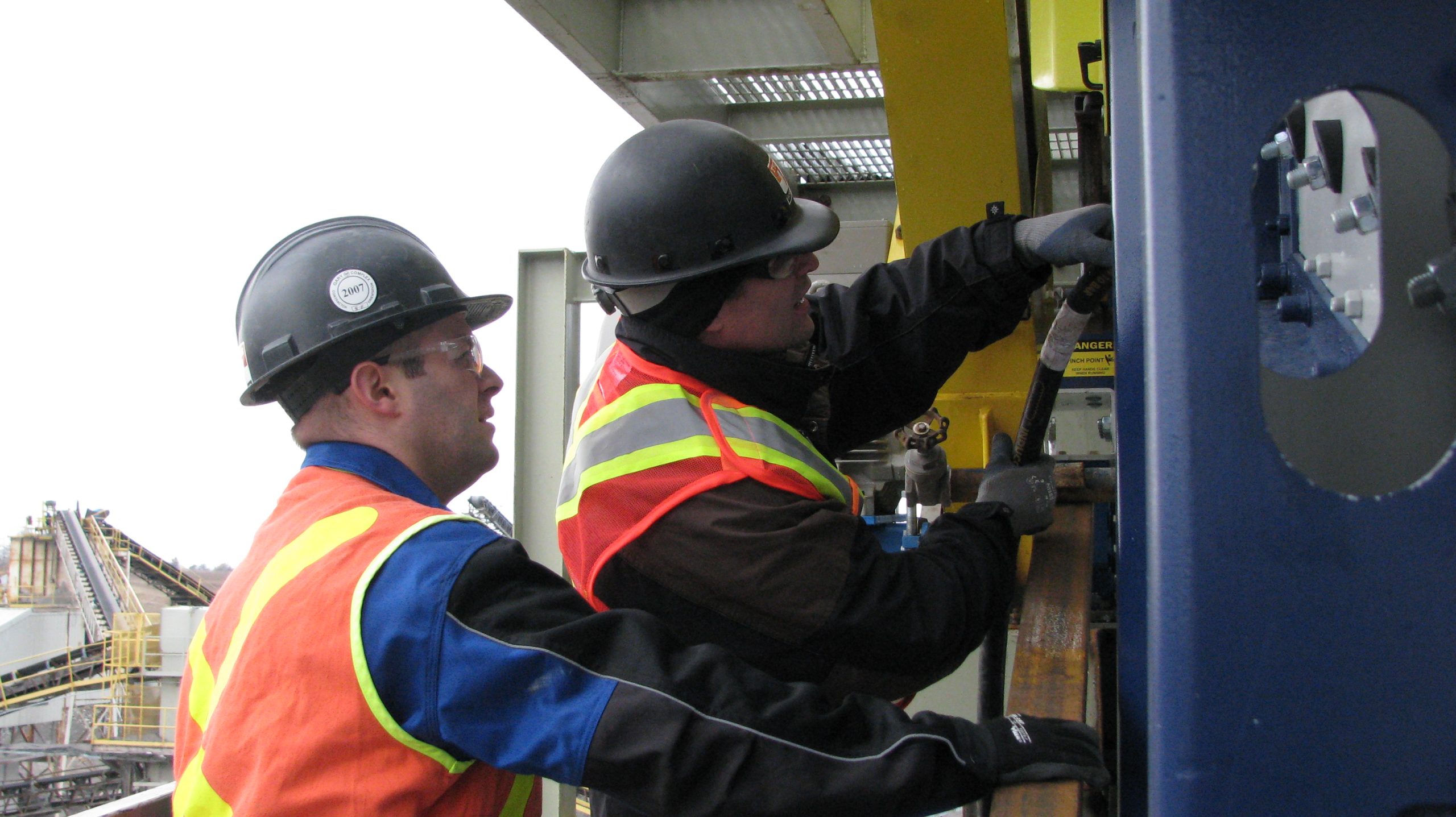By Wilm Schulz

Vibrating screens are built to withstand harsh conditions, but that doesn’t mean preventative maintenance isn’t needed. To ensure long-lasting equipment, winterization and maintenance can be completed during winter downtime to protect equipment against lower temperatures without sacrificing production.
Avoiding the Freeze
Equipment needs to be winterized by the time temperatures are regularly below freezing. Start with the wash plant. Make sure to drain all water lines to prevent freezing. Do the same thing with dedicated washing systems. Draining is usually as simple as allowing the water to flow out of the equipment, though crews can be more thorough by blowing out the lines and pump with dry air.
Next, flush vibrating screen lines with grease to remove contaminants from the bearings and slingers. Action should be taken to protect screen media from the elements and decrease the potential for rust and deterioration. Move any extra screen media or components to a space out of the elements. The media could be covered with a tarp or placed in a storage container.
Warm Up to Get Working
Before startup, operations should allow the equipment to run for about 10 minutes to warm up. If temperatures are below -10 C (14 F), then standard grease should be replaced with a grease that can handle the lower digits, such as EP1.
Monitor and remove snow and ice build-up and clear the area around the screen. Though unlikely, the weight of significant ice can affect the equipment’s balance and performance.

Partnering for Success
Winter is a great time to inspect equipment, train workers and make changes to improve performance and longevity. Work with OEM-certified technicians to check for damaged or broken components. Listen while the equipment is running for unusual noises. Also, look for broken or excessively worn screen media. The screen media scrap pile can be a great place to identify common problems and diagnose how to fix them.
To encourage proactive maintenance and keep downtime to a minimum, partner with an equipment OEM for a service visit and inspection. OEMs often set up regular servicing schedules where they evaluate equipment performance and provide recommendations.
Certain manufacturers use diagnostics, such as vibration analysis, during each service visit to offer a thorough analysis and help find problems easily missed by the human eye, such as a hairline crack or twisting. These systems measure machine stroke and other vibration data to determine the equipment’s health. Abnormalities can help pinpoint problems so they can be addressed quickly to avoid downtime.
OEM-certified service technicians provide recommendations to improve machine performance. Recommendations range from polyurethane liners to improve durability, to alternative screen media to address specific screening issues. They will also point out any parts or repairs needed.
Stay Ahead of Maintenance
Maintenance and proper storage are critical for maximum protection over the winter and into the spring. Work with a trusted OEM for best practices when it comes to winterizing equipment or operating in cold conditions to help ensure accuracy and machine longevity.
Wilm Schulz is the head of Haver & Boecker Niagara’s North American service team as parts and service manager. https://haverusa.com.
